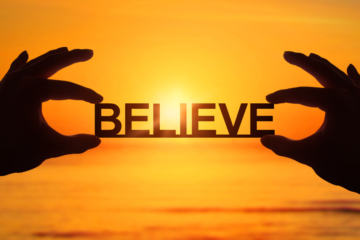What’s in your should box?
We’ve all got one and often, it can dictate the way we live and the choices we make. It was created during our early childhood and yet it still affects us in adulthood. It creates a tension between our conscious and our subconscious even though we barely know it’s there. Most interestingly, perhaps, the things that are in it were put there by someone else.
Our ‘should box’ consists of embodied messages, beliefs – call them what you will – that cover everything from likes, dislikes, fears, cultural beliefs, and even our perception of what is ‘normal’ and what is not.
Psychologists agree that these messages are embedded before we have the capacity for independent choice or freedom of thought. Up until we are seven years old, our beliefs are shaped by those around us. We embody what our parents, guardians and other close family members think, feel and do.
Unfortunately, such messages are often negative or self-sabotaging for us once we get to later life which is why I wanted to ask whether you are even aware of what is in this ‘should box’? So called because it will dictate the way you think you ‘should’ behave, ‘should’ feel and ‘should’ react. Should is not a positive word. It is a controlling way to live if all we do is listen to this subconscious narrative that we neither chose nor fully understand.
A misguided legacy
Because previous generations condition us, and the same thing happened to them, these boxes usually contain beliefs or ideas that are rooted in the past. This is the main reason they are not conducive to progressive thinking and don’t take into account that the world around us changes and our choices are no longer necessarily the same as they were for our relatives.
The important message here is that we do not need to be governed by our should box. Because we now understand so much more about the mind and how important those first seven years of life are in shaping us, we now have something of a key to access and reconsider its contents.
To do so, spend some time reflecting on the beliefs you hold with regards to love, money, your career, inner strength, your values. Then think about your relatives and what you might have received form them in terms of beliefs handed down. If you do this for every topic you can think of, and consider every family member with whom you were close during your childhood, you will start to get some clarity on why you hold some of the opinions you do, why your reactions are what they are, and why you have the strengths and weaknesses that you do.
Now it’s time to choose
Having undertaken this exercise you will quickly realise which of the things in your ‘should box’ serve you and which don’t. The next step is to ask yourself what permission you give yourself to change your beliefs and behaviours. What will you no longer tolerate in life? What are you happy with and what would you like to tweak?
Eve if it still feels hard – and let’s not forget our should box contains things that helped form who we are today (rightly or wrongly) – it’s important to sit with the task of finding your own truth. In doing so, you will begin to process these ‘shoulds’ and change them to choices. Learning to move away from some of these beliefs and messages; to recognise them for what they are (other people’s preconceived ideas, for the most part); is a powerful and empowering journey to take. You will recognise that others’ battles are not your own. You will also, importantly, start to break the chain of passing on such thoughts and opinions to future generations, giving your younger relatives the gift of freedom of choice and clarity of thought.

